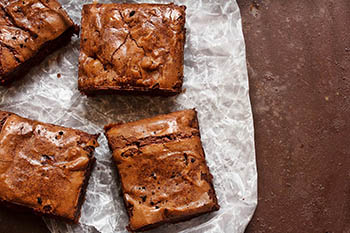
I recently saw a headline that said sugar was “the biggest dietary enemy we face.”
But the truth is humans evolved to eat sweet foods. It’s how our ancestors knew a food growing in the wild was safe to eat and that it was good for us.
In fact, there are no naturally sweet foods that are harmful to your health…
Nature wouldn’t let you evolve to like something bad for you. Foods with natural fat, salt and sugar are some of the healthiest foods you can eat.
And they have an underserved bad rap.
So if sugar isn’t the problem, what is?
The real health crisis comes from starchy carbohydrates in foods like grains.
Humans were never meant to eat grains. It was only after modern agricultural techniques were developed that a grain-based diet become the new normal.
It makes sense from Big Agra’s point. These foods are cheap to produce. And the more a food is manipulated and removed from its natural state, the more a company can profit from it.
When you think about it, grains are bland and tasteless. So food manufacturers add back sugar, as well as fats and salts, to get you to eat them.
These kinds of foods score high on the Glycemic Index.
The Glycemic Index (GI) is one of the best tools you can use to protect your health. It measures how quickly foods break down into sugar.
Switching from traditional foods to a grain-based, high-glycemic diet sparked the surge of chronic diseases we see today. Diseases like obesity, heart disease, cancer and diabetes.
But there’s another damaging effect these foods have.
They convert to simple sugars in your body. And that causes wrinkles, redness, sagging, dehydration and crepey skin.
In other words, a high-carb diet doesn’t just age your body. It ages your face, making you look much older than you really are.
Here’s what happens when the carbs you eat break down into sugar…
In your bloodstream, sugar molecules attach to proteins in a natural process called glycation.
This forms harmful new molecules called advanced glycation end products, or AGEs. And the more starchy carbs you eat, the more AGEs you produce. These AGEs damage every system in your body.
But your skin’s collagen and elastin are especially vulnerable. When they bond with simple sugars, collagen and elastin break down and lose their elasticity. They become stiff and inflexible.
Then they start to droop.
I call it the “carb sag.”
Scientists tested the effects of sugar on skin aging. They photographed 602 people between the ages of 50 and 70. They measured their blood sugar levels. They showed the photos to 60 people who were instructed to guess how old the person in the photo was.
Researchers found that those with the lowest blood sugar levels looked years younger than those with the highest levels.
In fact, for every 1 mmol/liter increase in blood sugar, the estimated age of the person increased by five months.1
Glycation is a natural process and it can’t be completely stopped. But you can slow it down. And the best way is to eat a low-glycemic diet. Click here for a link to my Glycemic Index chart.
Now, I realize that we all want a decadent dessert once in a while. And I think it’s perfectly fine to treat yourself. By using clever substitutions, you’ll never taste the difference.
Here’s a recipe we love at my house.
|
Dark Chocolate Almond Brownies |
|
| • 1 cup organic almond butter | • 2 large organic eggs |
| • 1/4 tsp. sea salt | • 1/3 cup honey |
| • 4 tbsp semi-sweet chocolate chips | • 1/4 cup organic cocoa powder |
| • 12 drops SweetLeaf Liquid Stevia | |
1. Preheat oven to 325 degrees F.
2. Add all ingredients to a large bowl and combine.
3. Pour batter into 8-inch square greased cake pan.
4. Sprinkle with chocolate chips.
5. Bake on the middle rack for 22-26 minutes. Let cool and serve.
To Your Good Health,
![]()
Al Sears, MD, CNS
1. Noordam R, et al. “High serum glucose levels are associated with a higher perceived age.” Age (Dordr). 2013 Feb;35(1):189-95.









